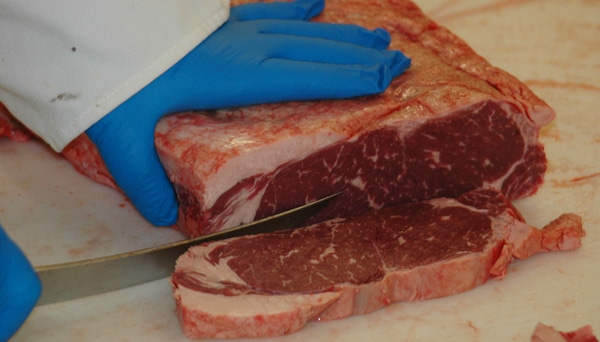Labor availability and temporary plant closures for unforeseen maintenance issues likely pose the primary potential concerns.
October 7, 2017

Unsurprisingly, a growing number of producers are wondering whether packing capacity can keep up with the expanding beef herd.
“Plants will add additional slaughter hours to manage the extra supply through 2019,” says Trevor Amen, CoBank animal protein economist. “The biggest potential concerns—as the industry drifts closer to maximum packing capacity—are labor availability and temporary plant closures for unforeseen maintenance issues.”
In a new report from CoBank's Knowledge Exchange Division, Amen explains Saturday slaughter hours steadily increased since the middle of 2016. He adds that processors are expected to increase investments in automation and robotics to reduce the risk of skilled labor shortages.
Packers have proven their ability to meet the need so far this year with multiple weeks of fed cattle slaughter above 500,000 head.
Although the nation’s cowherd continues to expand, Amen says the industry has the capability to meet beef packing capacity needs without reopening shuttered plants or constructing additional facilities.
Expansion is most aggressive in history
“The beef herd expansion we've seen from 2014 to 2017 has been the most aggressive three-year start to any expansion on record,” Amen says. “Recent slaughter numbers and the cattle on feed mix indicate the expansion rate is slowing, but barring any significant export market disruptions or weather events, expansion will continue through the end of the decade.”
USDA estimates the 2017 calf crop will top 36 million head, an increase of 2.9% over 2016 and an 8.3% increase compared to the cyclical low calf crop in 2014.
CoBank forecasts beef production to increase another 3-5% in 2018 and 2019.
Consequently, Amen emphasizes demand—beyond expectations so far this year—is critical, especially export demand.
“Export demand has been strong,” Amen explains. “Momentum has been building since July 2016 and forecasts continue to adjust upward for the remainder of this year. Combined with decreased imports, we're experiencing a more favorable net trade balance and keeping domestic per capita supplies in check while supporting prices levels.”
According to Amen, U.S. beef exports are on pace to increase 7-9% this year and 5-7% next year.
As usual, added opportunity comes with extra risk. In this case, Amen explains that increasing dependence on export markets offers significant growth opportunities for the industry, but also increases the uncertainty and risk of domestic oversupply.
Look in the November issue of BEEF for more insights from Amen and others regarding current beef packing capacity relative to herd expansion.
You May Also Like



